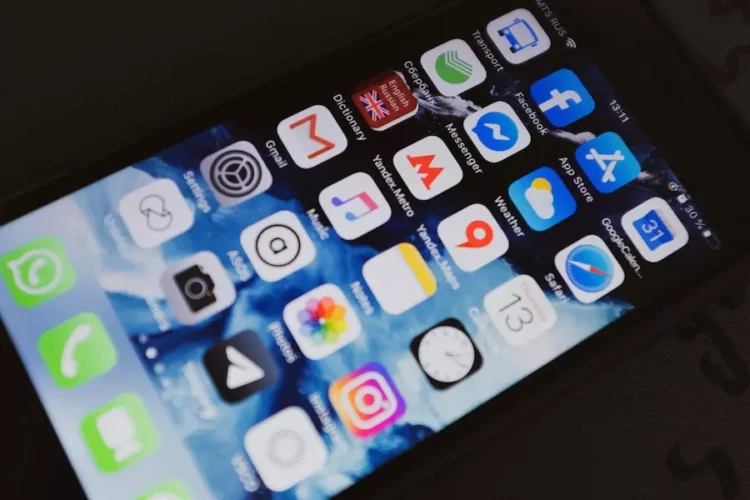Spy software can be a severe threat to your privacy and security. It can be installed on your iPhone without your knowledge and used to monitor your activities, record conversations, and access your personal information. Knowing how to detect and remove spy software on your iPhone is integral.
Failure to detect and remove spy software can compromise your privacy and personal information. This blog explores the effective ways to detect and remove spy software on your iPhone.
Signs Your iPhone May Have Spy Software Installed
There are several signs that your iPhone may have spy software installed. The following are the most common signs of spy software on iPhone:
- Battery drain: If your iPhone’s battery drains faster than usual, it could indicate that spy software is running in the background.
- Slow performance: Spy software can cause your iPhone to run slower than usual. If you notice that your phone is sluggish or takes a long time to open apps, it may be a sign of spyware.
- Increased data usage: Spy software uses data to send the information it collects to the person who installed it. If you notice a significant increase in data usage, it could indicate that spyware is running on your iPhone.
- Unusual behavior: If your iPhone starts behaving in unique ways, such as turning off or restarting on its own, it could be a sign that spy software is running.
- Suspicious text messages: If you receive strange or unusual text messages, especially those with links or attachments, it could be a sign that spy software is trying to install on your iPhone.
Therefore, if you suspect that your iPhone has spy software, it is crucial to take action to protect your information. If you need help understanding the signs, contact a security professional for assistance. Hackers can also use spy software to spy on you through your iPhone’s camera.
With that said and listed, numerous other things, such as background apps and full storage, can cause the signs. You should monitor your iPhone closely for a better conclusion when you suspect unauthorized access.
Are you wondering how to know if someone is watching you through your phone camera? The following ways may indicate that an anonymous individual is using your iPhone’s camera to spy on you: It is crucial to follow good security practices to avoid someone using your iPhones camera to spy on you.
- Suspicious background applications
- Camera misbehaving or malfunctioning
- Odd files and unexplained low storage space
- Misbehaving indicator light
- Battery draining faster.
However, before jumping to conclusions, it is essential to examine the signs of your iPhone.
Step-By-Step Guide To Finding Spy Software On Your iPhone
If you have noticed the above signs with your iPhone. Therefore, acting quickly and finding spy software on your device is integral. The following is a step-by-step guide to help you find spy software on your iPhone:
- Step 1: Update your iPhone
- Step 2: Check for jailbreaking
- Step 3: Check for unknown apps
- Step 4: Use iPhone Security App.
The steps can be used in all versions and iPhone devices to find spy software.
Step 1: Update Your iPhone
Before beginning, ensure your iPhone iOS is updated to the latest version. This makes sure that your software has the latest patches and that security vulnerabilities are fixed. Here is how to update your iPhone iOS:
- Go to your iPhone Settings and select General
- Click Software Update
- Go to Download and Install.
Step 2: Check for Jailbreaking
iOS Jailbreaking is a process that permits individuals to bypass iPhone restrictions. This makes your iPhone more vulnerable to spy software and other malicious programs.You can change your Apple Id and set Two-Factor Authentication to prevent jailbreaking.
Here is how to check if your iPhone has been jailbroken:
- Go to Settings and click General
- Click About and find the word “Jailbreak.” If you see the word, it means your iPhone has been jailbroken, and your privacy is at risk.
Step 3: Check for Unknown Applications
The spy software is often installed in the form of an application. Therefore, checking your device for any unknown or suspicious apps is significant. Here is how to check for unknown and suspicious applications:
- Go to settings and click General
- Go to iPhone Storage
In the iPhone storage, ensure that you look for any applications you do not recognize installing or suspicious.
Step 4: Use iPhone Security App
Numerous iPhone security applications, such as Clario, Avast, Norton 360, TotalAV, etc., can help you find spy software on your device. Implementing an iPhone security app will provide better protection and identification of spy software on your phone. It is essential to ensure that you perform a regular spy software scan that will keep your privacy secure and help you identify any threats to your iPhone.
How To Remove Spy Software From Your iPhone
If you have found spy software on your iPhone, it is integral to remove it immediately to secure your valid information and privacy. The following are the steps you can take to remove spy software from your iPhone:
Uninstall Unknown and Suspicious Applications
Suppose you have identified any unknown and suspicious applications on your iPhone. Ensure you immediately remove the applications from your device to secure your confidential information. To remove suspicious applications, press and hold the application icon until it starts shaking, then click the “X” or “–”in the left corner of the app icon to delete it.
Change Your Login Details
If you identify and remove suspicious apps, it is also integral to ensure you change your passwords for all your accounts. These accounts include your email, social media platforms, and banking accounts. Changing your login details will prevent unauthorized people from spying on you and obtaining your information. When changing your passwords, use strong, unique passwords for your accounts and avoid using the same password for multiple accounts.
Install Anti-spy Software
The security app identifies and removes spy software from your devices and protects your iPhone from other malicious programs. Ensure you look for a reputable security app on your device for better security. After installing the security app, ensure you regularly scan your iPhone for spy software and other threats.
Wrapping Up
Protecting your iPhone from spy software and other threats to your privacy and security is integral. If you suspect someone is spying on you and identify spy software in your iPhone, remove it immediately. Following the above guide, you can protect your iPhone from spy software and secure your privacy and security.















